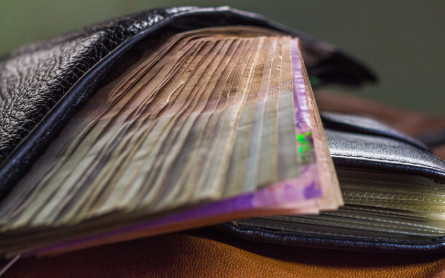
Planning & budgeting
Saving & investing
KiwiSaver
Tackling debt
Protecting wealth
Retirement
Home buying
Life events
Setting goals
Money tracking
Plan your spending with a budget
Getting advice
Studying
Get better with money
What pūtea beliefs do you have?
How to build up your emergency savings to cover unexpected costs
How to save your money
How to start investing
Find a financial adviser to help you invest
Your investment profile
Compound interest
Net worth
Types of investments
Term deposits
Bonds
Investment funds
Shares
Property investment
How KiwiSaver works and why it's worth joining
How to pick the right KiwiSaver fund
Make the most of KiwiSaver and grow your balance
How KiwiSaver can help you get into your first home
Applying for a KiwiSaver hardship withdrawal
How to use buy now pay later
What you really need to know before you use credit
How to get out of debt quickly
Credit reports
Know your rights
Pros and cons of debt consolidation
Credit cards
Car loans
Personal loans
Hire purchase
Student loans
Getting a fine
What happens if I start to struggle with moni?
How to protect yourself from fraud and being scammed
About insurance
Insurance types
Insuring ourselves
Wills
Enduring powers of attorney
Family trusts
Insuring our homes
Losing a partner
Redundancy
Serious diagnosis
How to cope with the aftermath of fraud
Separation
About NZ Super – how much is it?
When you’re thinking of living in a retirement village
How to plan, save and invest for retirement
Manage your money in retirement
Find housing options in retirement
Four approaches to spending in retirement
Planning & budgeting
Saving & investing
How to build up your emergency savings to cover unexpected costs
How to save your money
How to start investing
Find a financial adviser to help you invest
Your investment profile
Compound interest
Net worth
Types of investments
Term deposits
Bonds
Investment funds
Shares
Property investment
View all
KiwiSaver
Tackling debt
How to use buy now pay later
What you really need to know before you use credit
How to get out of debt quickly
Credit reports
Know your rights
Pros and cons of debt consolidation
Credit cards
Car loans
Personal loans
Hire purchase
Student loans
Getting a fine
What happens if I start to struggle with moni?
View all
Protecting wealth
Retirement
Home buying
21 March 2016
Reading time: 3 minutes
Posted by Tom Hartmann,
1 comment

Have you ever come across The Richest Man in Babylon? It’s a timeless set of parables by George S. Clason that were first published way back in 1926. He set his stories in Babylon, which he regarded the wealthiest city of the ancient world, a place where people were good at earning money, saving it and making it work for them to earn even more.
But the interesting thing is that the stories begin with there actually being a huge problem with inequality in Babylon, with the king worrying about all the riches being held by a few. So he finds an expert to share the techniques of the rich with everyone.
Ninety years on, while I’m not sure this will cure today’s inequality, these parables are as current as ever. Consider these seven “cures for a lean purse”, with my modern equivalents in brackets. Sound familiar?
So let’s just say that the idea of “paying ourselves first” has been around an incredibly long time, possibly even 6,000 years if you go by Babylon. (Or at least as far back as 1926.)
The book recommends setting aside one gold coin for every ten earned – a 10% savings rate. But how do we know how much to pay ourselves first? (If we were paying ourselves last, it would be just whatever was left over, which usually is not much.)
I’ve been guilty in the past of pulling a number out of thin air to save. It turned out to be trouble – an attempt to fly without bothering to strap on wings or find out how hard the ground is!
How much we set aside has to be an amount that works for our budget, a savings rate that fits our lifestyle. (If that amount’s not enough to get the results we’re after, that lifestyle may need a redesign, or perhaps a whole renovation.)
To help, there’s Sorted’s new budgeting tool, which has been rebuilt from the ground up. It lets us plug in an amount to budget, fill in all the categories we spend money on, and plan our saving. It’s easy to see how much we can set aside comfortably, without missing the fun in life or neglecting the bills.
That’s when the purses start fattening.
Use verification code from your authenticator app. How to use authenticator apps.
Code is invalid. Please try again
Don't have an account? Sign up
Or log in with our social media platforms


A free account gives you your very own space where you can save your tools and track your progress as you get ahead.
Or sign up using Google:



Comments (1)
Comments
23 May 20
Anonymous
~Thank you for interpreting the principles in today's language
No one has commented on this page yet.
RSS feed for comments on this page | RSS feed for all comments